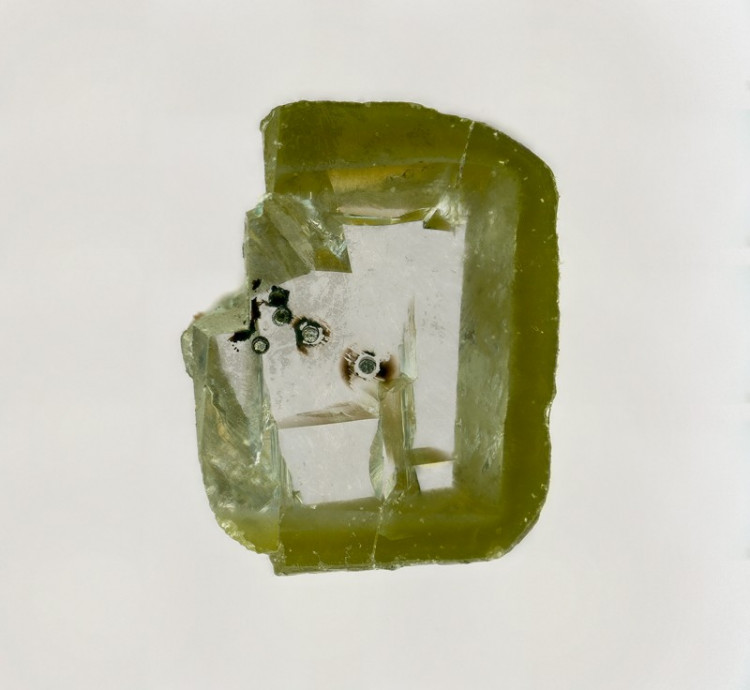An ancient diamond unearthed in Botswana contains a never-before-seen mineral that originated deep within the Earth. Called davemaoite, the mineral is yet another proof there's a lot left to be discovered in our home planet.
The diamond, which was discovered in a mine in Orapa, Botswana, is around 4 millimetres wide and weighs 81 milligrams. In 1987, a dealer sold it to a scientist studying diamonds at the California Institute of Technology, but neither the dealer nor the scientist realized how unique it was.
Davemaoite, named after eminent geophysicist Ho-kwang (Dave) Mao, is the world's first example of a high-pressure calcium silicate perovskite (CaSiO3). Wollastonite, another type of CaSiO3, is found all over the world, but davemaoite has a crystalline structure that occurs only under great pressure and high temperatures in Earth's mantle, the mostly solid layer of Earth trapped between the outer core and the crust.
The mineral has long been thought to be abundant and geochemically significant in the mantle of the Earth. However, because davemaoite breaks down into other minerals as it goes closer to the surface and pressure falls, scientists have never uncovered any clear proof of it.
However, a sample of undamaged davemaoite has been discovered inside a diamond that originated in the mantle roughly 410 miles below Earth's surface. As a result, davemaoite has been confirmed as a new mineral by the International Mineralogical Association.
"The discovery of davemaoite came as a surprise," lead author Oliver Tschauner, a mineralogist at the University of Nevada, Las Vegas, told Live Science.
Tschauner and his colleagues discovered the davemaoite sample using synchrotron X-ray diffraction, a technique that precisely focuses a high-energy beam of X-rays on specific areas within the diamond. Researchers can figure out what's inside by analyzing the angle and intensity of the returning light, according to Tschauner.
He noted that because the sample of davemaoite within the diamond was only a few micrometers in size, less-powerful sampling techniques would have missed it.
Davemaoite is a mineral that makes up about 5% of Earth's lower mantle and is significant because it is expected to host radioactive elements such as uranium, thorium, and potassium-40, which heat the planet as they decay.
According to scientists, the Earth would have cooled by now if not for these radioactive elements.
The davemaoite in the Botswanan diamond also contains sodium and potassium, which is remarkable because these elements are supposed to be mostly found in the Earth's crust, rather than deep in the mantle.
This indicates that surface material is being recycled back into the mantle, according to researchers.
Tschauner and his colleagues are continuing their search for super-deep diamonds in the hopes of uncovering more hidden minerals. This is a difficult process because there are no easy techniques to tell whether a diamond is shallow or deep in origin, and there is no means of knowing where the deep variety will be located.






